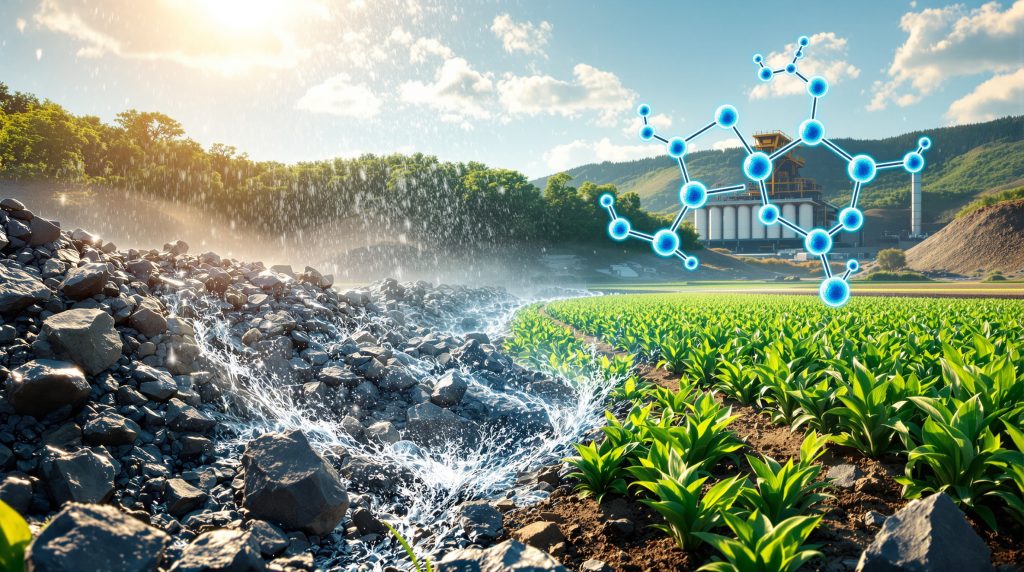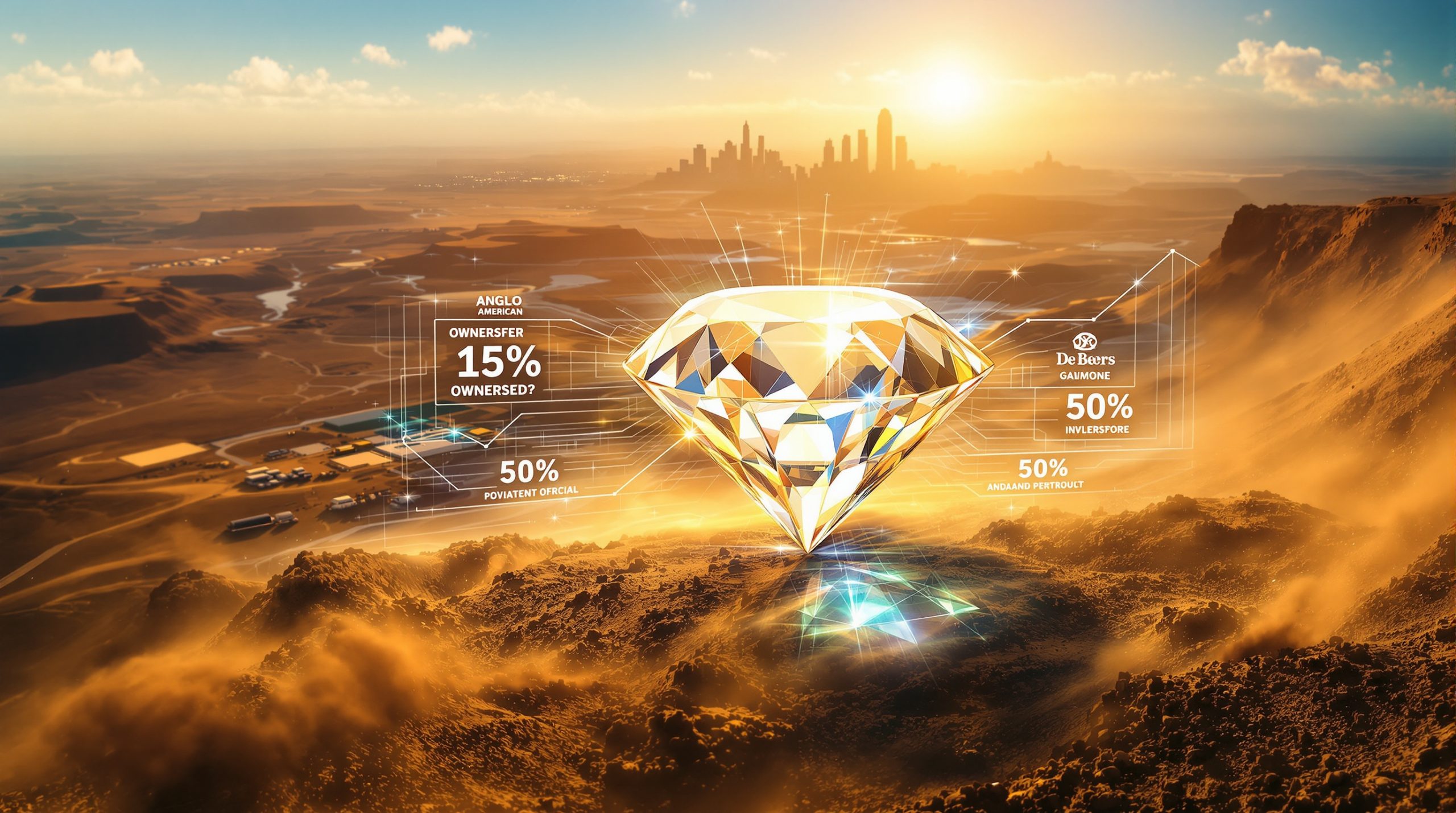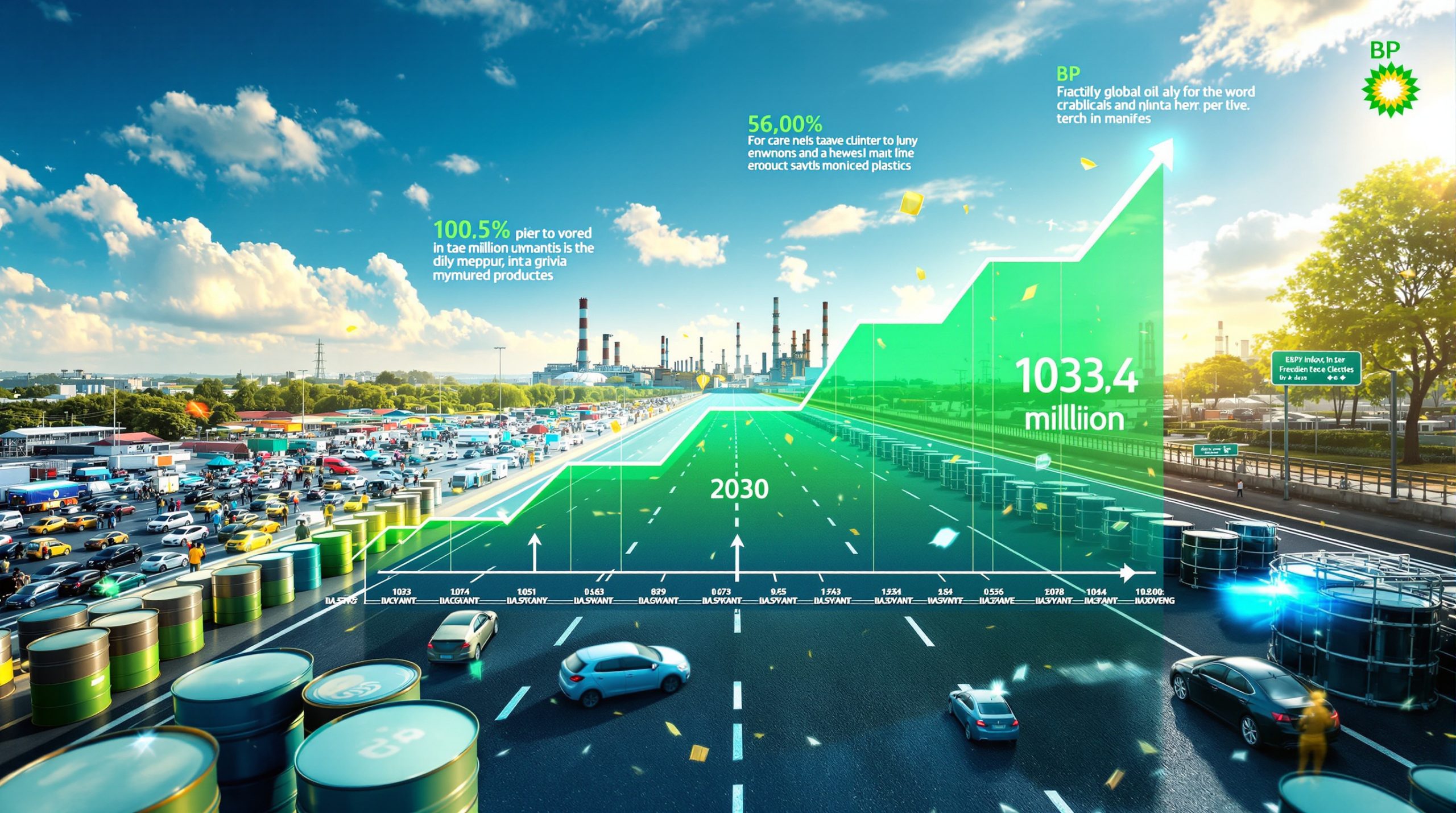Enhanced Weathering Carbon Credits: The Mining Industry's New Frontier for Climate Action
Enhanced weathering represents a promising carbon dioxide removal (CDR) approach that accelerates natural geochemical processes to capture atmospheric CO₂. This technique involves spreading finely crushed silicate-rich rocks over land where they react with rainwater and CO₂, transforming carbon into stable mineral forms that can remain sequestered for thousands of years.
The Science Behind Enhanced Weathering
Enhanced weathering speeds up Earth's natural carbon cycle by increasing the surface area of reactive minerals exposed to CO₂. According to research published in Nature Climate Change (2018), enhanced weathering represents one of the most scalable negative emission technologies due to the abundance of suitable silicate minerals.
When silicate minerals interact with carbonic acid in rainwater, they form bicarbonates and eventually carbonates through a chemical reaction: silicate minerals + CO₂ + H₂O → dissolved bicarbonates + metal ions. This process can theoretically sequester 2-4 billion tonnes of CO₂ annually by 2050, according to the Royal Society's "Greenhouse gas removal" report (2018).
Unlike some carbon removal methods, enhanced weathering provides long-term carbon sequestration measured in millennia. Studies published in Nature Reviews Earth & Environment (2020) indicate that enhanced weathering can maintain carbon sequestration for an impressive 10,000-100,000 years.
Beyond carbon capture, these minerals can improve soil fertility, increase crop yields, and enhance resilience to climate change. Silicate weathering naturally removes approximately 1.1 billion tonnes of CO₂ from the atmosphere annually, as reported in Nature Geoscience (2019).
From Process to Credits: The Verification Challenge
Quantifying exact carbon removal amounts requires sophisticated monitoring techniques. Measurement, Reporting, and Verification (MRV) systems require soil sampling at multiple depths and timepoints to accurately track carbon sequestration, according to research in Environmental Research Letters (2021).
Emerging methodologies track carbon from application through soil incorporation to final mineralization. Additionality assessment involves comparing weathering rates with and without human intervention, as detailed in Carbon Management (2020).
Credit quality depends on proving long-term carbon sequestration, with verification protocols emphasizing the permanence of carbon removal. The optimal particle size for enhanced weathering typically ranges from 10-100 micrometers according to Environmental Science & Technology (2021), which significantly affects weathering rates.
Third-party verification systems ensure credibility in the carbon marketplace, with increasing emphasis on transparency and scientific validity.
How Are Mining Companies Revolutionizing Carbon Removal?
Mining operations produce vast quantities of mineral by-products that, rather than becoming waste, can serve as valuable feedstock for enhanced weathering projects. This represents a significant opportunity for the industry to participate in climate solutions.
Mining Waste to Climate Asset Transformation
Magnesium and calcium-rich mining by-products offer ideal enhanced weathering materials. Global mining waste production exceeds 100 billion tonnes annually according to the United Nations Environment Programme (2019), with approximately 20-30% containing suitable silicate minerals for enhanced weathering as reported in Minerals Engineering (2020).
Mining companies can utilize their existing processing facilities and transportation networks, reducing processing costs by 40-60% compared to purpose-built facilities according to the Journal of Cleaner Production (2020).
The mining sector's operational capacity enables rapid deployment at climate-significant scale. Mine tailings often contain olivine, serpentine, and other magnesium-silicate minerals optimal for CO₂ sequestration, as documented in Applied Geochemistry (2021).
Carbon credits provide new revenue streams while addressing environmental concerns, creating an economic incentive to repurpose materials previously considered waste management solutions. This approach aligns with broader industry evolution trends toward sustainability and circular economy principles.
Case Study: Project Earthstone in Brazil
Project Earthstone demonstrates a strategic partnership model between Anglo American and ZeroEx that showcases industry-science integration. As Tony Oehm, CEO of ZeroEx, explains: "Enhanced Weathering can only scale through close partnership with the mining industry. By combining Anglo American's operational expertise with ZeroEx's science and MRV technology, we can launch projects with unprecedented efficiency."
The project aims to remove up to 15 million tonnes of CO₂ from the atmosphere, according to information from Global Mining Review (2025). Located near agricultural land to maximize both carbon removal and soil enhancement benefits, the project exemplifies how mining operations can contribute to climate solutions while creating additional value.
The project specifically targets magnesium-depleted soils with its magnesium-rich feedstock, creating dual climate and agricultural value. Katie Fergusson, SVP Studies & Development at Anglo American, emphasized that "The primary objective of the Project Earthstone trial is to demonstrate we can generate Enhanced Rock Weathering carbon credits at scale, in a safe, fully verifiable and responsible manner."
What Makes High-Quality Enhanced Weathering Credits Different?
Not all carbon credits are created equal. The emerging enhanced weathering credit market emphasizes rigorous standards to ensure environmental integrity and market credibility.
Critical Quality Factors for Enhanced Weathering Credits
High-quality enhanced weathering credits are based on peer-reviewed research and validated methodologies. The Intergovernmental Panel on Climate Change (IPCC) Sixth Assessment Report (2022) identifies enhanced weathering as having "medium confidence" for large-scale deployment potential, highlighting the importance of scientific validation.
Comprehensive measurement, reporting, and verification (MRV) systems track carbon throughout the process. Weathering rates increase exponentially with temperature, approximately doubling for every 10°C increase according to research published in Geochimica et Cosmochimica Acta (2019).
Projects must demonstrate they wouldn't happen without carbon credit financing—a concept known as additionality. This requirement ensures that enhanced weathering carbon credits drive new carbon removal rather than supporting activities that would have happened regardless.
Environmental safeguards ensure no negative ecological impacts from mineral application. Protocols must address potential dust emissions, water quality effects, and impacts on soil biodiversity.
Credits represent carbon that will remain sequestered for centuries or millennia, providing significantly greater climate value than temporary carbon storage solutions.
The Role of Third-Party Verification
Independent assessment by specialized verification bodies evaluates project claims and ensures they meet established standards. These assessments typically involve field sampling, laboratory analysis, and comprehensive documentation review.
Standardized methodologies provide consistent evaluation criteria, helping to establish market credibility and allowing comparison between different enhanced weathering projects.
Advanced monitoring technologies track carbon from application through sequestration, with techniques ranging from soil sampling to remote sensing and isotopic analysis.
Regular audits ensure continued compliance with credit standards, typically conducted annually or at major project milestones to verify ongoing carbon sequestration.
How Are Partnerships Driving Market Development?
The enhanced weathering carbon credit market is evolving through strategic collaborations between mining companies, technology providers, and carbon market specialists.
Key Partnership Models Emerging in the Market
Mining-technology partnerships, like Anglo American partnering with specialized carbon removal firms such as ZeroEx, combine industrial capacity with scientific expertise. These collaborations leverage existing infrastructure while applying cutting-edge carbon removal science.
Science-industry collaborations validate commercial applications, ensuring that projects are based on sound scientific principles while addressing practical implementation challenges.
Market facilitator relationships, such as those involving organizations like Isometric, connect credit producers with corporate buyers. These facilitators help navigate the complex carbon credit marketplace and ensure credits meet buyer requirements.
Agricultural integration partnerships with farming communities implement and monitor field applications. These collaborations help ensure that enhanced weathering delivers both carbon removal and agricultural benefits.
The Isometric-Anglo American-ZeroEx Partnership
The collaboration combines complementary expertise in mining operations, carbon removal science, and market facilitation. Anglo American provides operational capacity and feedstock, ZeroEx contributes scientific knowledge and monitoring technology, and Isometric facilitates market access.
The partnership creates an integrated value chain from mine waste to verified carbon credits, addressing each step from material processing to carbon verification and credit issuance.
With a focus on scalability, the partnership is designed to rapidly expand successful pilot projects into commercial-scale operations. The initial Project Earthstone serves as a proof of concept for larger deployments.
Quality emphasis remains paramount, with the collaboration prioritizing high-integrity credits that meet stringent standards. As Katie Fergusson of Anglo American noted, the primary objective is generating credits "in a safe, fully verifiable and responsible manner."
What Are the Implementation Challenges for Enhanced Weathering Projects?
While promising, enhanced weathering faces several practical hurdles that must be overcome for widespread adoption.
Technical and Logistical Barriers
Rock crushing to specific particle sizes for optimal weathering requires significant energy input. Processing typically requires 10-50 kWh per tonne of material according to the International Journal of Mineral Processing (2019), with optimal crushing producing 90% of particles below 2mm diameter as reported in Chemical Geology (2020).
Transportation logistics for moving large volumes of material to application sites requires efficient systems. Transportation costs can represent 30-50% of total project costs depending on distance, according to Resources Policy (2021).
Developing equipment and techniques for spreading minerals effectively presents another challenge, particularly for large-scale agricultural application across diverse terrains.
Energy considerations must ensure the carbon footprint of processing doesn't outweigh removal benefits. Projects must carefully account for all emissions associated with mining, crushing, transportation, and application.
Scientific Uncertainty Management
Climate, soil type, and mineral composition all affect carbon removal efficiency. Weathering rates vary by a factor of 10-100 depending on climate conditions, according to Global Biogeochemical Cycles (2021).
Tracking carbon sequestration over decades requires sustained commitment to monitoring and verification. This long-term perspective presents challenges for project financing and management.
Ongoing research into effects on soil microbiomes and ecosystems helps ensure that enhanced weathering doesn't cause unintended consequences for biodiversity or ecosystem function.
Continuing studies aim to maximize carbon removal while minimizing costs, addressing the economic and technical challenges of widespread implementation.
What Economic Opportunities Do Enhanced Weathering Credits Present?
The financial aspects of enhanced weathering credits reveal an emerging market with significant potential for growth and investment.
Market Development and Pricing Trends
First verified credits are establishing pricing benchmarks in this nascent market. While specific pricing data is limited, enhanced weathering credits are positioning themselves as premium carbon removal products due to their permanence and co-benefits.
High-quality enhanced weathering credits are commanding price premiums over conventional offsets. The emphasis on "high-quality CDR credits" in the Anglo American-ZeroEx-Isometric partnership suggests positioning at the premium end of the carbon market.
Net-zero commitments from major corporations are fueling interest in durable carbon removal solutions like enhanced weathering. These corporate sustainability goals increasingly require permanent rather than temporary carbon storage.
Growing capital flows into enhanced weathering ventures reflect investor confidence in the long-term potential of this carbon removal approach.
Cost Structure Analysis
Processing infrastructure and transportation systems represent significant initial investment requirements. However, using existing mining infrastructure can substantially reduce these costs.
Energy, labor, and maintenance expenses constitute the major operational cost factors. Enhanced weathering theoretical costs range from $50-200 per tonne CO₂ according to Nature Climate Change (2018), compared to direct air capture costs of $150-600 per tonne reported by the International Energy Agency (2022).
Unit costs typically decline with increased project size due to economies of scale in processing, transportation, and application.
Agricultural yield improvements can provide additional revenue beyond carbon credits. This diversification makes enhanced weathering projects economically attractive even at lower carbon credit prices.
How Does Enhanced Weathering Compare to Other Carbon Removal Approaches?
Understanding enhanced weathering in context requires comparing it with alternative carbon dioxide removal methods.
Comparative Advantages of Enhanced Weathering
Enhanced weathering offers more durable carbon storage than biological methods like reforestation. While forests sequester carbon for decades to centuries, enhanced weathering provides millennial-scale storage.
The soil improvement co-benefits alongside carbon removal distinguish enhanced weathering from technologies like direct air capture, which focus solely on carbon removal.
Utilizing abundant minerals and existing industrial capacity makes enhanced weathering highly scalable. The Earth's crust contains virtually unlimited supplies of suitable minerals.
Enhanced weathering requires less dedicated land than afforestation or Bioenergy with Carbon Capture and Storage (BECCS). Land requirements are 10-100 times lower than BECCS for equivalent CO₂ removal, according to Nature Communications (2021).
Limitations Relative to Alternatives
Crushing rock requires significant energy input, making enhanced weathering more energy-intensive than some biological approaches. Enhanced weathering requires 50-200% more energy than afforestation but provides permanent storage, according to Environmental Research Letters (2020).
Carbon removal is more difficult to measure than in some alternatives like direct air capture, where carbon flows can be directly quantified.
Benefits accrue gradually rather than immediately, unlike some carbon removal methods that show more rapid initial results.
Optimal deployment depends on suitable soil and climate conditions, limiting the geographic regions where enhanced weathering is most effective.
What Environmental and Social Impacts Should Be Considered?
Beyond carbon removal, enhanced weathering projects have broader implications that must be carefully managed.
Environmental Considerations
Controlling particulate emissions during processing and application requires careful dust management protocols. Environmental Science & Technology (2020) highlights the importance of dust control measures to prevent air quality impacts.
Changes in runoff chemistry must be monitored to protect water quality in surrounding ecosystems. Silicate minerals can alter water pH and mineral content.
Assessing effects on soil organisms and plant communities helps ensure enhanced weathering supports rather than disrupts ecosystem function. Silicate weathering typically increases soil pH by 0.1-0.5 units according to Soil Biology and Biochemistry (2021).
Evaluating whether additional extraction is needed or only waste is utilized helps minimize the mining footprint. The most environmentally beneficial approach utilizes existing waste materials rather than new extraction, which also supports mine reclamation innovations.
Social and Community Dimensions
Potential yield improvements and climate resilience provide significant agricultural community benefits. From the transcript, Project Earthstone's magnesium-rich feedstock can "improve soil health and crop productivity – particularly in magnesium-depleted soils."
Job creation in processing and application offers local economic opportunities, particularly in rural and agricultural communities where economic diversification is valuable. This aligns with broader mineral beneficiation insights about creating value from mining operations.
Training and education for effective implementation are essential knowledge sharing requirements. Farmers and land managers need to understand how to apply materials effectively and safely.
Involving communities in project planning and monitoring emphasizes the importance of stakeholder engagement, ensuring projects address local needs and concerns.
What's the Future Outlook for Enhanced Weathering Carbon Credits?
The trajectory of enhanced weathering in the carbon removal landscape suggests significant evolution ahead.
Market Growth Projections
Enhanced weathering capacity is expected to scale from millions to potentially billions of tonnes of CO₂ removal. While Project Earthstone targets 15 million tonnes of CO₂, industry-wide adoption could achieve much greater impact.
From initial projects like Earthstone in Brazil, worldwide implementation is anticipated as techniques are refined and verified.
Premium prices are likely to be maintained as quality standards become established. The emphasis on high-quality, verified credits suggests continued price differentiation from conventional carbon offsets.
Increasing capital allocation is expected as the approach proves successful, with early demonstration projects attracting further investment upon validation.
Policy and Regulatory Developments
Specialized protocols for enhanced weathering verification are emerging as the market matures. These frameworks will standardize how carbon removal is measured and credited.
Potential tax benefits or direct subsidies for implementation could accelerate adoption through government incentives. Carbon removal policies are evolving rapidly in many jurisdictions.
Integration into global carbon accounting frameworks would provide international recognition for enhanced weathering credits.
Public funding for optimization and monitoring studies provides research support essential for addressing remaining scientific questions and improving data driven operations.
FAQ: Enhanced Weathering Carbon Credits
How long does carbon remain sequestered through enhanced weathering?
Carbon captured through enhanced weathering remains sequestered for thousands to tens of thousands of years, making it one of the most permanent carbon dioxide removal approaches available. Studies published in Nature Reviews Earth & Environment (2020) indicate sequestration timescales of 10,000-100,000 years. The carbon becomes incorporated into stable mineral forms that resist re-release to the atmosphere, providing essentially permanent climate mitigation.
Can enhanced weathering improve agricultural productivity?
Yes, enhanced weathering can significantly improve agricultural productivity by releasing beneficial nutrients like potassium, calcium, and magnesium into soils. Project Earthstone specifically targets "magnesium-depleted soils" with its magnesium-rich feedstock. Beyond nutrient provision, enhanced weathering can also help neutralize soil acidity, improve soil structure, and enhance water retention capacity, all contributing to higher crop yields and agricultural resilience.
What verification standards exist for enhanced weathering credits?
Several verification frameworks are emerging specifically for enhanced weathering, emphasizing rigorous measurement, reporting, and verification (MRV) protocols. These standards require comprehensive tracking of carbon from application through soil incorporation to final mineralization. Third-party verification ensures that carbon removal claims are scientifically sound and accurately quantified, providing confidence to credit buyers.
How do mining companies benefit from enhanced weathering projects?
Mining companies benefit through multiple channels: generating revenue from carbon credits, repurposing waste materials that would otherwise require management, enhancing their environmental credentials, and creating new business opportunities. As demonstrated by Anglo American's participation in Project Earthstone, mining companies can leverage existing infrastructure and operational expertise to efficiently implement enhanced weathering at scale.
What makes enhanced weathering credits "high-quality"?
High-quality enhanced weathering credits are characterized by rigorous scientific validation, transparent monitoring systems, verified permanence, demonstrated additionality, and careful environmental impact assessment. They typically undergo third-party verification and maintain complete traceability from mineral application to carbon sequestration. The permanence of carbon storage—measured in millennia rather than years or decades—makes enhanced weathering credits particularly valuable for long-term climate goals.
Want to Capitalise on the Next Major Mineral Discovery?
Discovery Alert instantly notifies investors of significant ASX mineral discoveries through its proprietary Discovery IQ model, turning complex geological data into actionable insights for traders and investors. Visit the Discovery Alert discoveries page to understand how major mineral discoveries have historically generated substantial returns, and begin your 30-day free trial today.




